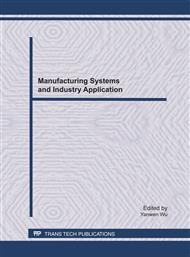p.253
p.259
p.265
p.271
p.277
p.283
p.289
p.297
p.302
Research on Software Trustworthiness Level Evaluating Model Based on Layered Idea and its Application
Abstract:
In order to evaluate software trustworthy level in quantitative method, it is the key how to effectively integrate numerous of evidence items to analyze software trustworthiness. Combing with analytic hierarchy process (AHP), a software trustworthy level evaluation model based on layered idea is proposed. The model is applied to evaluate the trustworthy level of a kind of software. Based on improved trustworthy software triangle model, a single evidence item is analyzed to decide that it contributes only to one single trustworthy attribute or to multiple trustworthy attributes. Then, all evidences are grouped to different evidence groups according to the evidences’ different contribution to different trustworthy attributions. After that, the evidence group is used as an individual layer between evidence level and trustworthy attribute level. Finally, the quantitive evaluation to software trustworthy level is done from the evidence layer in the bottom to the evaluation level in the top. AHP is used to set the weight. The proposed evaluation model balances the complexity of theory and convenience of operation effectively. The layered AHP is easy to realize in the model. In order to analyze the model performance, a kind of software system is used as object in the simulating experiments. Experimental results show that the proposed model can evaluate the software system effectively.
Info:
Periodical:
Pages:
277-282
Citation:
Online since:
June 2011
Authors:
Price:
Сopyright:
© 2011 Trans Tech Publications Ltd. All Rights Reserved
Share:
Citation:


